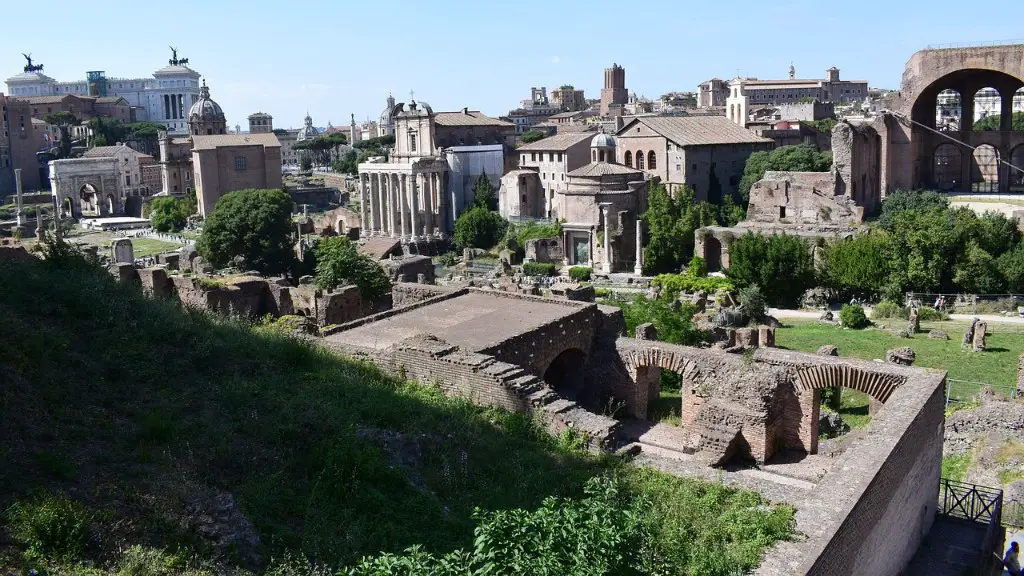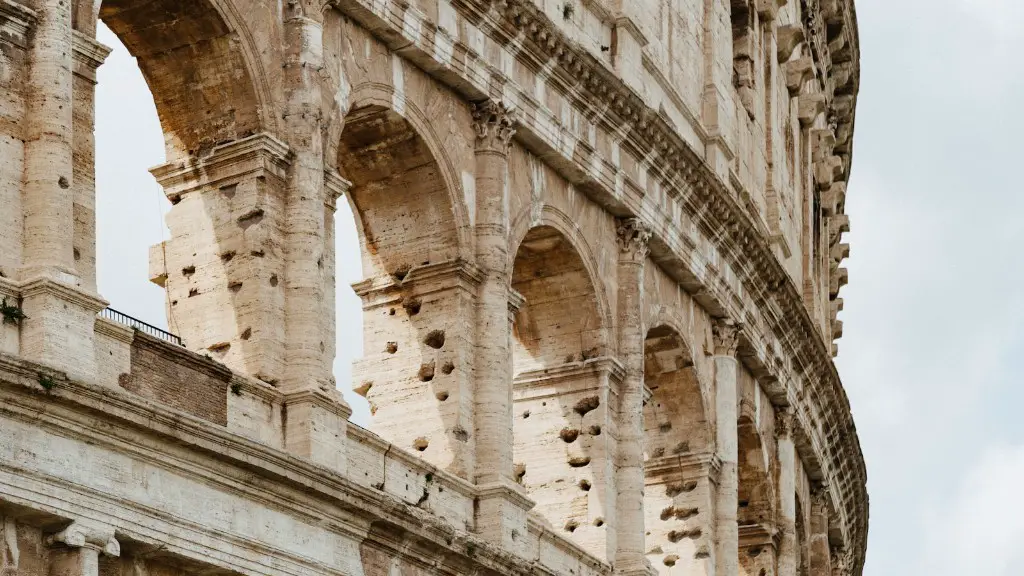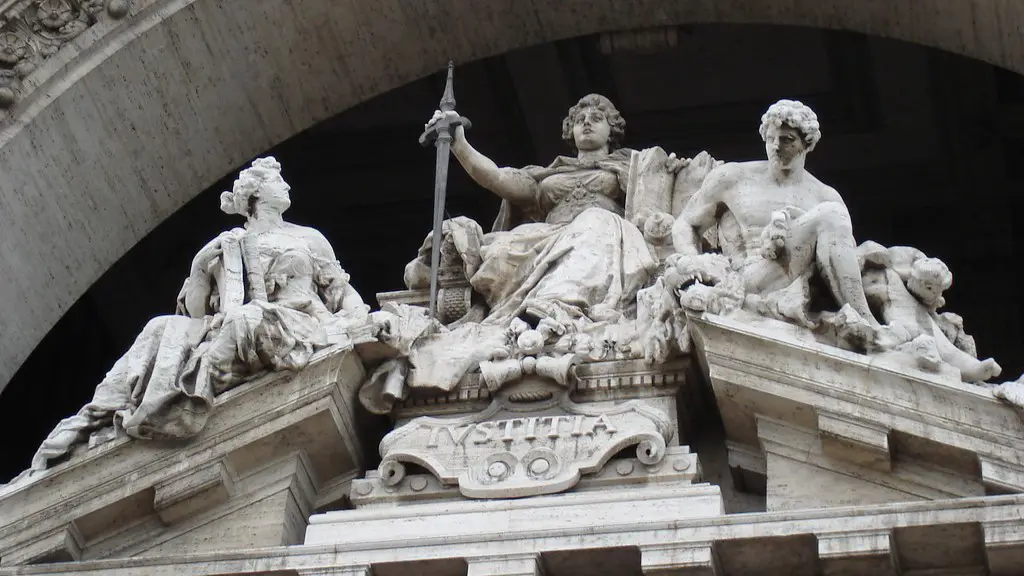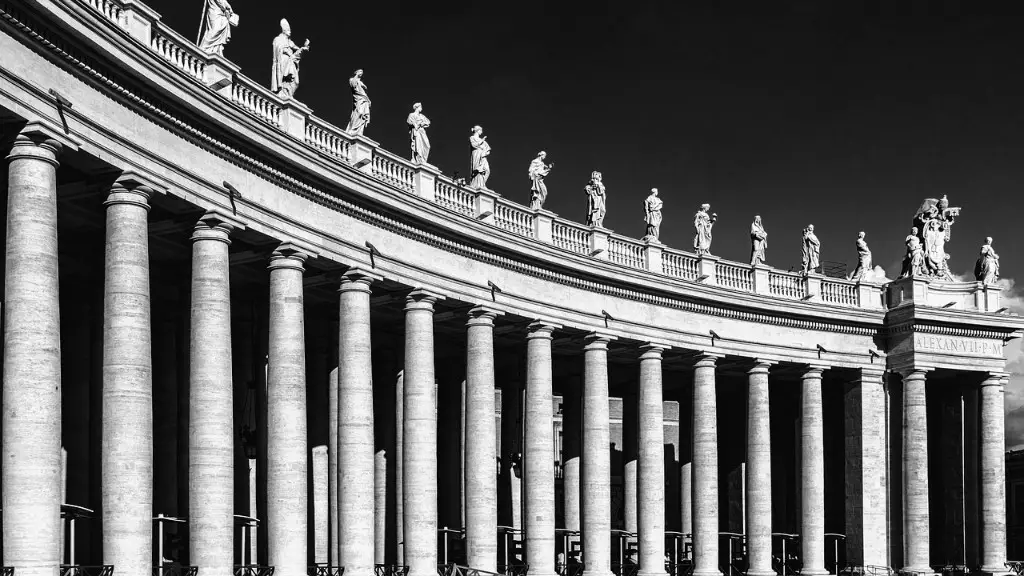Introduction
Ancient Rome was a major civilization in the Mediterranean and Mediterranean Europe, with a culture that has heavily influenced Western civilization for centuries. Many of the foundations of modern law, politics, literature, and architecture have their roots in this civilization. Ancient Rome was home to a polytheistic religion, which was the state-sponsored belief system for the Roman Empire.
Historical Context
The Roman religion was founded during the founding of Rome, around the 7th century BC. The religion was based on the worship of a pantheon of gods and goddesses. The pantheon was based on the Greek pantheon, and they were thought to be the guardians of Rome and the Roman Empire. The deities were seen as being powerful enough to protect and guide the city and its citizens.
The Roman religion was based on ancestor worship and venerating the dead. Animal sacrifices were common, and temples and shrines were built to honor the gods. In addition, the religion placed a great emphasis on honor, responsibility, and duty. It was essential that the citizens of Rome followed the traditions and rituals of the religion, and failure to do so could have dire consequences.
Significance of Roman Religion
The Roman religion was deeply entrenched in Roman culture and was fundamental to their laws and government. It was integrated into all aspects of life, from politics and law to art, literature, and architecture. The religion was seen as an integral part of the culture of the Roman Empire, and it provided an important moral code and social order that held Rome together.
The polytheistic religion of Rome also served to unify the vast empire. By worshipping the same gods and following the same traditions, the people of Rome were able to come together as one people. The gods were seen as being the same across the empire, and this unified identity helped to reinforce the bonds of loyalty between the citizens of Rome.
Effects of Roman Religion
The polytheistic religion of Rome has had a lasting impact on Western civilization. The worship of multiple gods and goddesses has become part of modern religious practices, and many of the beliefs and customs of the Romans have been preserved in some form or another. The Roman religion is also an important part of the mythology and folklore of Europe, and many of its tales and legends are still told today.
In addition, the worship of multiple gods had a profound effect on art, literature, and architecture. Mythological motifs and imagery can be found in some of the most famous works of art and literature, such as the works of William Shakespeare and Michelangelo. Furthermore, the religious beliefs of the Romans are still seen in various forms of architecture throughout the world.
Modern Interpretations of Roman Religion
Modern interpretations of the religion of Rome vary from person to person, but many see it as a source of inspiration and an example of how different cultures can come together. The beliefs and customs of the Romans also offer valuable lessons about the importance of morality, loyalty, and justice in society. Furthermore, the pantheon of gods can be seen as a symbol of unity, as the gods were seen as being the same across the empire.
The polytheistic religion of Rome is also seen as a source of knowledge and understanding. By studying the beliefs and customs of the Romans, we can gain insight into the society and culture of the ancient world. This knowledge can help us to better understand our own society and culture, and to make sense of the world around us.
Conclusion
The polytheistic religion of ancient Rome was deeply entrenched in Roman culture. It was a religion that was based on ancestor worship and venerating the gods. It served to unify the vast empire and provided a moral code and social order that held Rome together. Despite the changes of the modern world, the polytheistic religion of ancient Rome still has a profound influence on Western civilization today.
Pros and Cons of Roman Religion
The polytheistic religion of ancient Rome has both its pros and cons. On the plus side, it provided a moral code and social structure which was essential for Roman society to function. It also served to unify the empire by offering a common set of gods and myths. On the negative side, it could be seen as oppressive to some, with state-mandated worship and animal sacrifices being part of everyday life.
Modern Interpretations of Roman Religion
Modern interpretations of the religion of Rome vary from person to person, but it is often seen as a source of inspiration, knowledge and understanding. It has provided valuable teachings about morality, loyalty and justice in society, as well as providing ideas on how different cultures can come together. Furthermore, its mythological imagery can still be seen in art, literature and architecture today.
Legacy of Roman Religion
As a result of its lasting influence, the religion of ancient Rome is still celebrated today. It is commemorated in many festivals and rituals, and its gods are still worshipped at shrines and temples around the world. Furthermore, many of its beliefs and customs have been preserved in various forms and have been largely unchanged for centuries. The legacy of the Roman religion will continue to live on for generations to come.
Impact of Roman Religion on Society
The religion of ancient Rome had a profound impact on society. The beliefs and customs of the Romans shaped many aspects of life, from politics and law to art, literature, and architecture. The religion also provided a moral code and social order that was essential for the survival and success of the empire. Today, the religion is still a source of inspiration and understanding, and its legacy will continue to live on for generations to come.



